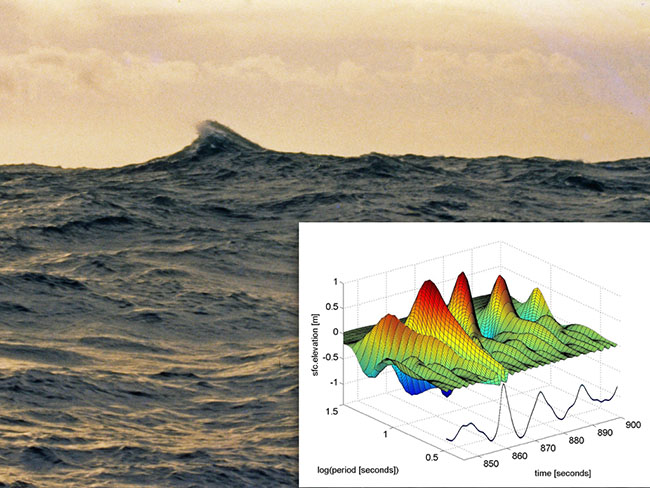Rogue waves can cause loss of life as well as damage to ships and offshore structures but we shouldn't allow nature to be exploited for political gain by claiming they are new - and caused by CO2 emissions - just because we can finally detect them better.
A new study shows they can occur roughly twice daily at any given location in a storm.
In the early morning hours of November 9th, 2007, the "Andrea wave" - actually a wave set of 13,535 individual waves - passed by a four-point square array of ocean sensors designed by the researchers to measure the wavelength, direction, amplitude and frequency of waves at the ocean surface. Now that data have been used to examine how the components came together to produce such a steep "rogue" wave. The data from the 100-meter wide “wall of water” moving at 40 miles per hour showed that Andrea may have reached heights greater than the recorded height of 49 feet above mean sea level.
The findings showed that the steeper the waves are, the less frequent their occurrence, which is about every three weeks at any location for the steepest rogues.
The Andrea crest height was 1.63 times the significant height (average height of the one third highest waves). Optimal focusing of the Andrea wave showed that the crest could have been even higher and limited by breaking at 1.7 times the significant height. This establishes the greatest height rogues can reach for any given (or forecasted) significant height.
 Rogue wave photo taken from the deck of the RV Cape Henlopen in the western North Atlantic during the Atlantic Remote Sensing Land/Ocean Experiment (ARSLOE) The crest of the rogue propogates from the right to left. Credit: H. Mitsuyasu. Inset figure: Surface elevation of groups in each period band displayed on axes of time and logarithm of period in seconds. All 32 periods are displayed and their sum (divided by 20) is graphed along the time axis. The Andrea crest is at 862 s. Credit: Donelan, et.al.
Rogue wave photo taken from the deck of the RV Cape Henlopen in the western North Atlantic during the Atlantic Remote Sensing Land/Ocean Experiment (ARSLOE) The crest of the rogue propogates from the right to left. Credit: H. Mitsuyasu. Inset figure: Surface elevation of groups in each period band displayed on axes of time and logarithm of period in seconds. All 32 periods are displayed and their sum (divided by 20) is graphed along the time axis. The Andrea crest is at 862 s. Credit: Donelan, et.al.
Citation: “The Making of the Andrea Wave and other Rogues,” Scientific Reports. Funded by the Norwegian Research Council. ConocoPhillips provided the wave data.